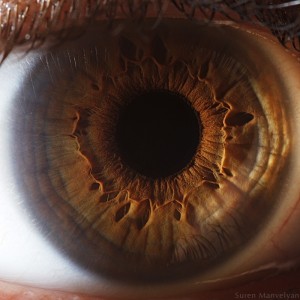
I can still remember the first time I used a slit lamp.
After looking at it and thinking, “What a weird shape for a microscope,” I sat on the stool and looked through the eyepieces into a human eye like I’d never looked before.
My first thought was, “Wow!“. That was it. I would never see the eyes in the same way again. I had discovered the beauty and detail of the fantastic EYE.
Before slit lamp photography…
Just a few years ago, there was no way to do slit lamp photography and share this experience with doctors and patients but to make them sit on the same stool and see through the slit lamp. Now things are different, we all have cameras and smartphones, and we are accustomed to taking pictures of everything all the time. Nothing can escape from our “always at the reach of our hands” camera. Even the Ophthalmic Photographers’ Society is dedicated to just this subject of ophthalmic photography.
So, how can we take advantage of this new generation of digital technology?
How can we exploit the high-quality optics of our slit lamps, microscopes, and even fundus cameras?
Along with the new digital technology, a new kind of slit lamp accessories designed especially for slit lamp photography started to surface: slit lamp cameras, iPhone adapters, android adapters, SLR adapters, etc.
Initially, the most adventurous ophthalmologist and optometrist would take out their phones and compact cameras to shoot directly into the eyepiece of the slit lamp. It was good enough! At least they had a picture! I’ve seen perfect images taken using this method.
Do I need a digital slit lamp?
Where there is a new invention, there is always room for improvement. The slit lamp photography accessories will fix these issues:
-
The need to have a fixed camera on the slit lamp :
You only have two hands, one to move the slit lamp’s joystick and focus and the other to hold a diagnostic lens, set the filters and light, or position the patient correctly. By freeing one hand, you can take your slit lamp exam as always, and when you are ready, click a button for crisp slit lamp photography.
-
The need for better anterior segment photos:
Taking the picture through the ocular will require focusing the whole eye every time and maybe changing the camera parameters (flash , ISO, etc.).
-
The need for speed and comfort:
Having a light in your eye is not comfortable. The less time the patient has to go through that experience, the better. More of a reason if they are children or seniors as they usually move more or/and have less patience. That is why the faster you can take a good picture, the better.
Nowadays, all these problems have been solved, we can shoot excellent pictures fast and on a budget, and for almost every slit lamp in the market, you will find the right option for your needs, from the economy eyepiece adapters to the high-end slit lamp integrated systems. You can even take pictures of the fundus of the Eye!
Are you using this technology today? If so, what kind of system are you using? I found great examples of anterior segment photography here.








